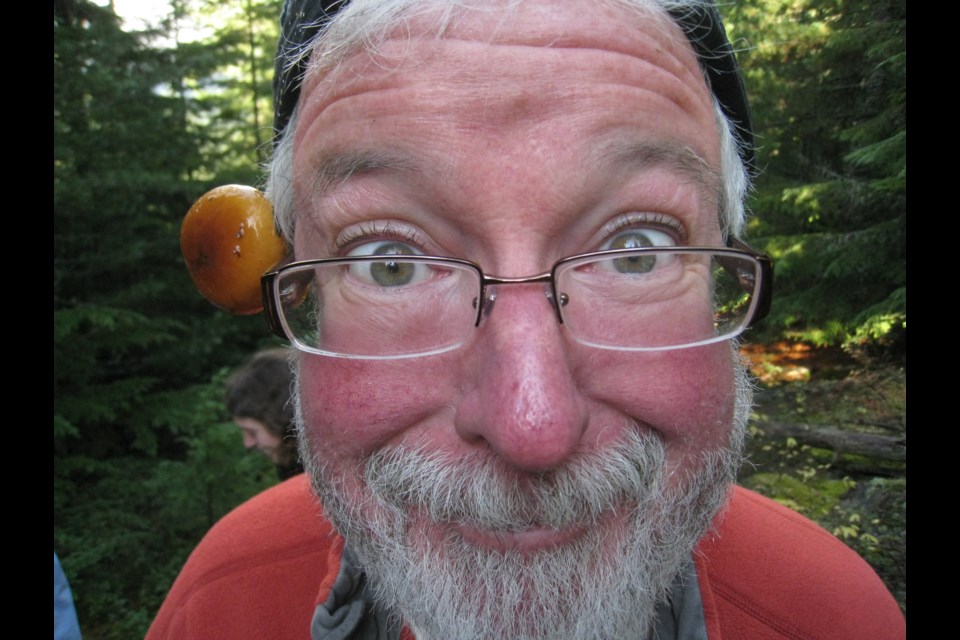Last year's edible mushroom season was a bit of a let down due to drought and other unfavourable climate conditions, but 2023 has been, as some fungi enthusiasts have noticed, a fairly spectacular and extended foraging season.
Forest ecologist Dr. Andy MacKinnon will visit the qathet region on Saturday, December 2, to present and talk about his landmark Royal BC Museum handbook: Mushrooms of British Columbia, at Powell River Public Library (2 pm).
“I’m very excited to be coming,” said MacKinnon. “The people there like to spend a lot of time outdoors, and they have a very active mushroom foraging community.”
Since September, and even in late November, mushroom foragers have been out in the woods finding an abundance of pine, King Boletes, also known as porcini, and winter chanterelles.
“Smaller mushrooms can fruit any month of the year, larger mushrooms, which are fruiting bodies of fungi growing attached to the roots of trees, are commonly found in the autumn months,” explained MacKinnon.
He said that earlier in autumn several species fruited in great abundance, including pine mushrooms.
“We have seen the most extraordinary King Boletes and the foragers I’ve talked to haven’t seen it [in abundance] like this,” added MacKinnon.
Porcini mushrooms are quite striking to see, with a cap that can be seven to 30 centimetres wide, reddish brown in colour and are a popular wild mushroom to pick.
“There are good edible mushrooms that pop up right around town in Powell River, and if you are quick enough to spot them before others, you can make a fine meal,” said MacKinnon.
Mushrooms are also commercially picked, and there are those who use mushrooms, lichen and plants for dying fabrics.
“There are people who gather medicinal mushrooms,” said MacKinnon. “But there are a lot of people who just like to go out in the woods, and see all the beautiful mushrooms, all different sizes and shapes and colours, to see this spectacular group of organisms.”
One area of research and work MacKinnon is passionate about is forest and mushroom conservation, and protection of mycological species diversity.
“The projects I have been involved with look at all the different [mushroom] species in the woods, not only focusing on edible ones but all of them,” said MacKinnon. “There are a lot of challenges for a lot of species right now, and that has to do with old-growth forests. A lot of the old growth has been logged, and continues to be logged.”
“I am an optimist by nature. The BC government is taking the most important first steps right now, and that's recognizing the forests as something more than just a source of timber.”
The uniqueness of wild edible mushrooms is that they grow attached to the roots of trees that are at least 40 years old. Pine, hedgehogs, chanterelles and porcini can’t practically be cultivated by humans.
“There are a bunch of mushrooms that are fruiting bodies of decomposing fungi like oyster, supermarket button mushrooms and shiitake, they can be cultivated,” said MacKinnon.
One of his favourite meals to make using wild mushrooms is corn chowder with chanterelles.
“There are a variety of chanterelle species and they have a slight sweet and nutty flavour that goes well with the corn,” said MacKinnon.
Although edible mushroom foraging is having a moment, and many folks are enthusiastically picking their next meal, there are some precautions to take.
“Foragers picking mushrooms for eating should learn the important identifying features of the mushrooms they're after, and the identifying features of mushrooms that look similar and aren't edible,” said MacKinnon. “A good mushroom guide is important. But the best way to begin learning about any group of organisms is to go out in the fields and forests with people who are experienced with that group.”
Join the Peak’s email list for the top headlines right in your inbox Monday to Friday.






